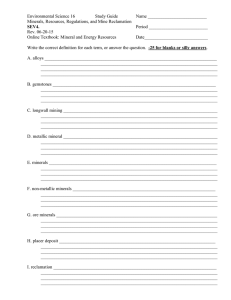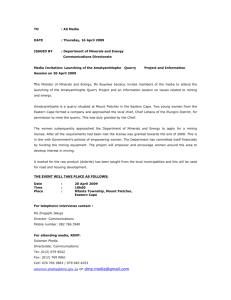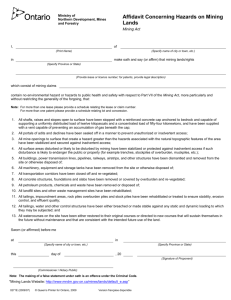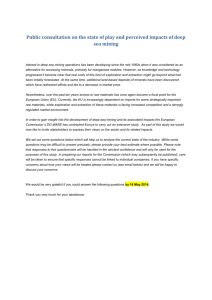Myths & Facts About the Mining Law
advertisement
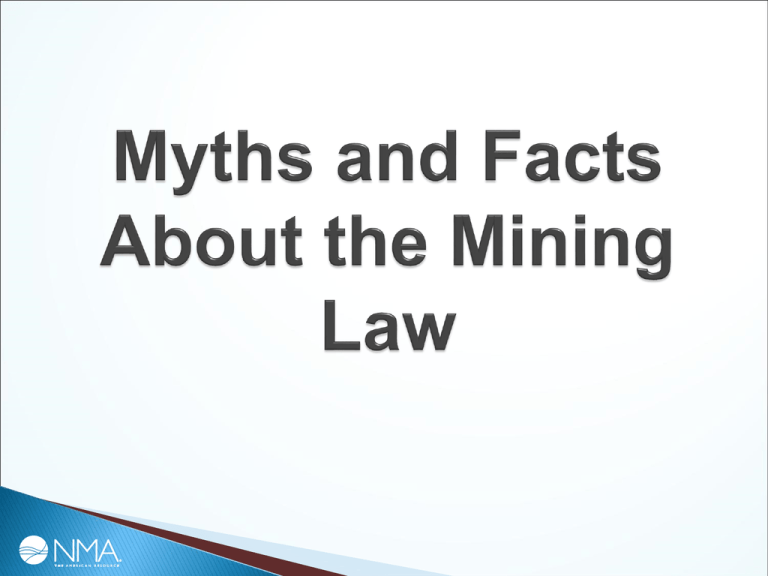
The Mining Law governs access to federal lands for locatable hardrock mineral activities ◦ It is not an environmental statute and doesn’t need to be ◦ It is intended to encourage development of our nation’s natural resources ◦ Locatable minerals include both metallic minerals (gold, silver, lead, copper, zinc, nickel, etc.) and nonmetallic minerals (fluorspar, mica, certain limestones and gypsum, tantalum, heavy minerals in placer form and gemstones). ◦ Amended by the Federal Land Policy and Management Act (FLPMA) Facts: U.S. metal mines directly contributed $19.1 billion to U.S. GDP during 2008. That contribution generated a total of $36.8 billion in economic output in the United States in 2008. Metal ore mining generated $14.6 billion in direct labor income and $36.3 in total. A recent PWC study reports that more than 400,000 Americans are directly employed in minerals mining jobs, and another 700,000 jobs are indirectly supported by mining Facts: The Mining industry has been on record for the last 15 years as supportive of a reasonable royalty that allows the industry to remain competitive The industry supported the 1995 bill vetoed by President Clinton that would have imposed a 5 % net proceeds royalty ◦ If that law had passed, millions of dollars would have been collected for cleanup of legacy mine sites that predate modern environmental laws Facts: The environmental impacts of mining on federal lands are already fully addressed by a comprehensive range of federal and state laws and regulations. Congressionally Mandated NAS Study: Federal and state laws are “generally effective” in providing environmental protection. Clean Air Act Clean Water Act Safe Drinking Water Act Resource Conservation and Recovery Act Endangered Species Act National Historic Preservation Act Wilderness Act Mining in the Parks Act Toxic Substances Control Act Surface Mining Control and Reclamation Act Wild and Scenic Rivers Act BLM Surface Management Regulations Forest Service Surface Management Regulations Soils Stabilization Sediments, Erosion and Drainage Surface Restoration Vegetation Excess Waste Structures Hydrologic Balance Surface Water Quality Ground Water Quality Air Quality Fish and Wildlife Inspections Administrative Orders Financial Assurance Permit Suspension or Revocation Injunctions Civil and Criminal Penalties Fact: The Federal Land Policy and Management Act requires prevention of “undue or unnecessary degradation” of public lands Mining that would cause such degradation cannot be approved




